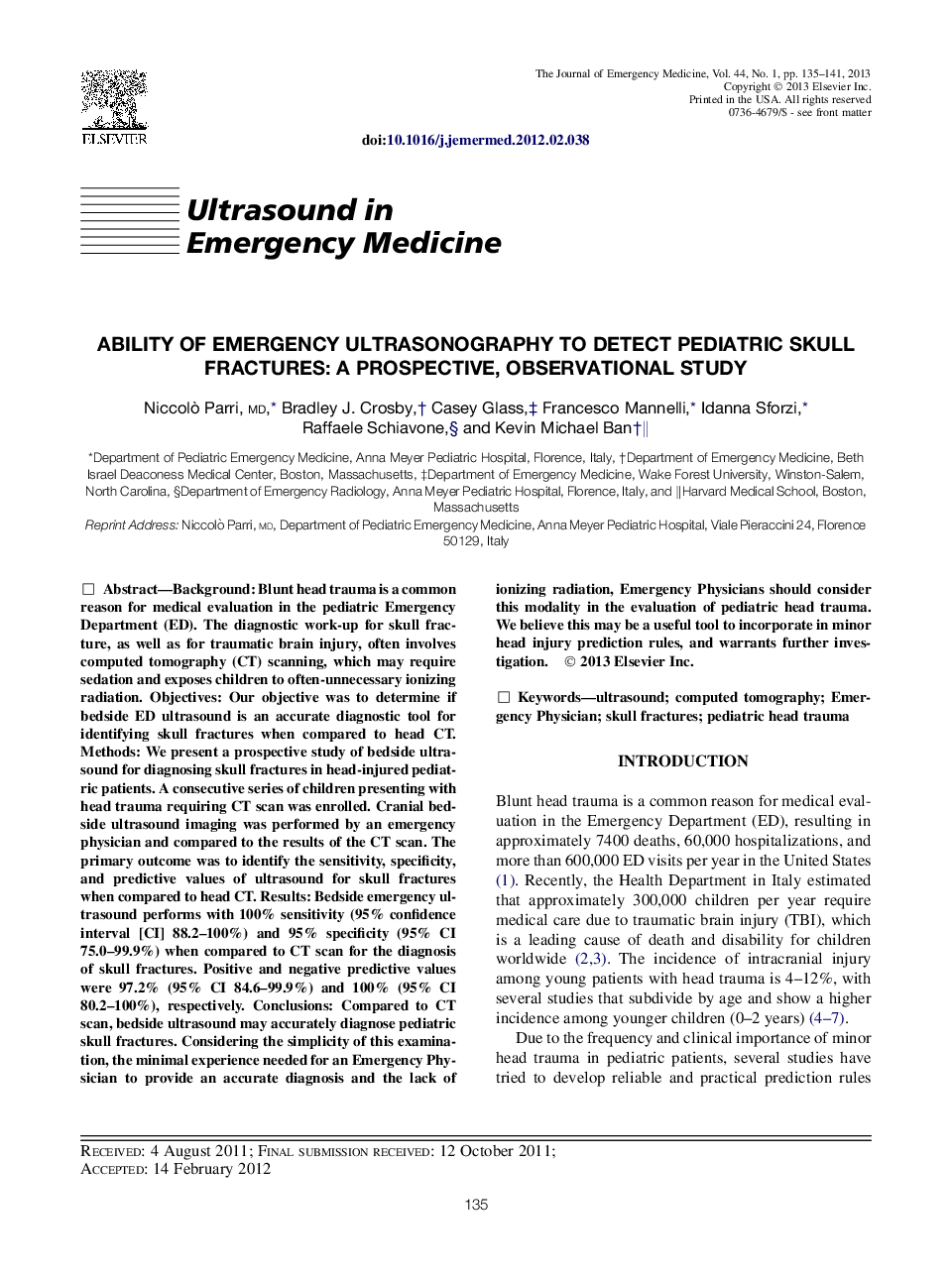| Article ID | Journal | Published Year | Pages | File Type |
|---|---|---|---|---|
| 3248689 | The Journal of Emergency Medicine | 2013 | 7 Pages |
BackgroundBlunt head trauma is a common reason for medical evaluation in the pediatric Emergency Department (ED). The diagnostic work-up for skull fracture, as well as for traumatic brain injury, often involves computed tomography (CT) scanning, which may require sedation and exposes children to often-unnecessary ionizing radiation.ObjectivesOur objective was to determine if bedside ED ultrasound is an accurate diagnostic tool for identifying skull fractures when compared to head CT.MethodsWe present a prospective study of bedside ultrasound for diagnosing skull fractures in head-injured pediatric patients. A consecutive series of children presenting with head trauma requiring CT scan was enrolled. Cranial bedside ultrasound imaging was performed by an emergency physician and compared to the results of the CT scan. The primary outcome was to identify the sensitivity, specificity, and predictive values of ultrasound for skull fractures when compared to head CT.ResultsBedside emergency ultrasound performs with 100% sensitivity (95% confidence interval [CI] 88.2–100%) and 95% specificity (95% CI 75.0–99.9%) when compared to CT scan for the diagnosis of skull fractures. Positive and negative predictive values were 97.2% (95% CI 84.6–99.9%) and 100% (95% CI 80.2–100%), respectively.ConclusionsCompared to CT scan, bedside ultrasound may accurately diagnose pediatric skull fractures. Considering the simplicity of this examination, the minimal experience needed for an Emergency Physician to provide an accurate diagnosis and the lack of ionizing radiation, Emergency Physicians should consider this modality in the evaluation of pediatric head trauma. We believe this may be a useful tool to incorporate in minor head injury prediction rules, and warrants further investigation.
